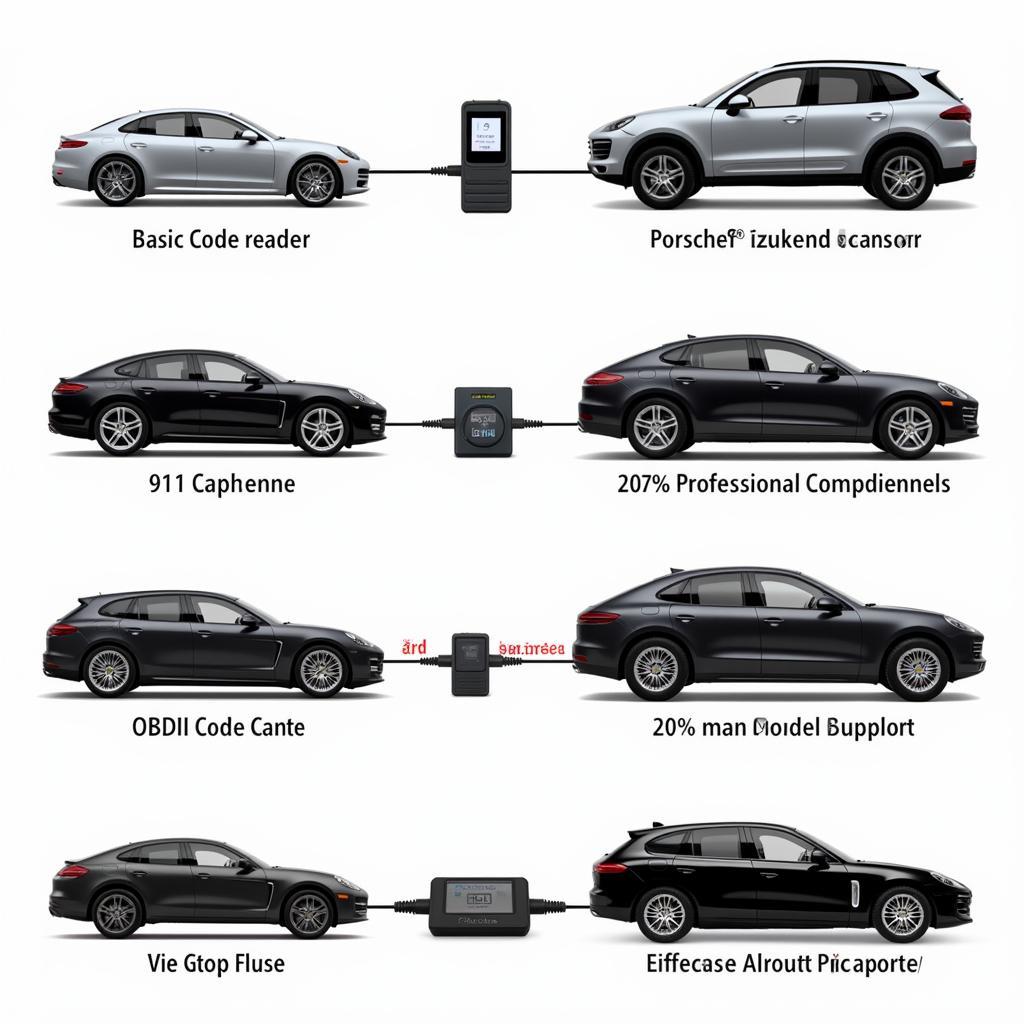Understanding your Porsche’s diagnostics is key to identifying and addressing potential issues. Whether you’re a seasoned mechanic or a Porsche enthusiast, this guide will equip you with the knowledge to effectively read and interpret those cryptic codes.
Decoding the Language of Your Porsche
Your Porsche speaks to you through a specialized language of Diagnostic Trouble Codes (DTCs). These codes, appearing as a combination of letters and numbers, hold the key to understanding your car’s health. But deciphering these codes requires the right tools and knowledge.
Essential Tools for Reading Porsche Diagnostics
Before diving into the codes themselves, it’s crucial to have the right equipment:
- Porsche Diagnostic Reader: A dedicated reader provides the most accurate and detailed information, allowing you to access Porsche-specific systems. Consider exploring our Porsche diagnostic reader options for reliable and comprehensive diagnostics.
- Porsche PIWIS 2 Software: For advanced diagnostics, programming, and coding, the PIWIS 2 software is indispensable. Learn more about the powerful capabilities of Porsche PIWIS 2 software.
Understanding Porsche Diagnostic Trouble Codes (DTCs)
Each DTC consists of five characters:
- First Character: Indicates the system where the fault originated (e.g., “P” for Powertrain, “B” for Body, “C” for Chassis).
- Second Character: Specifies whether the code is generic (0) or manufacturer-specific (1).
- Third Character: Identifies the specific system or subsystem related to the fault (e.g., “1” for Fuel and Air Metering, “2” for Fuel and Air Metering – Injector Circuit).
- Fourth and Fifth Characters: Represent the specific fault within the identified system.
Common Porsche Diagnostic Codes
While specific codes vary across models and years, here are some frequently encountered DTCs:
- P0171: System Too Lean (Bank 1)
- P0300: Random/Multiple Cylinder Misfire Detected
- P0420: Catalyst System Efficiency Below Threshold (Bank 1)
- U0100: Lost Communication with ECM/PCM
Interpreting Diagnostic Codes
Simply reading a DTC is only the first step. Accurate interpretation involves:
- Identifying the Affected System: The first three characters of the code pinpoint the system requiring attention.
- Researching the Specific Code: Utilize online resources, repair manuals, or consult with experts to understand the potential causes and symptoms associated with the code.
- Performing Visual Inspections: Check for loose connections, damaged wiring, or visible issues in the identified system.
Resetting Porsche Diagnostic Codes
After addressing the underlying issue, it’s crucial to reset the codes. This can often be done using a Porsche diagnostic code reset tool. However, it’s important to note that simply clearing codes without proper repair will only mask the problem.
The Importance of Pre and Post Scan Position Statements
Before and after any diagnostic or repair work, documenting the vehicle’s condition is crucial. This practice provides valuable insights into the effectiveness of repairs and helps avoid future misdiagnoses. Discover the significance of pre and post scan position statements for Porsche vehicles.
Choosing the Right Porsche Diagnostic Tool
Selecting the appropriate diagnostic tool depends on your needs and expertise. Consider factors such as:
- Functionality: Basic code readers provide DTCs and their definitions, while advanced tools offer live data, bi-directional control, and coding capabilities.
- Compatibility: Ensure the tool is compatible with your specific Porsche model and year.
- User Friendliness: Opt for a tool with an intuitive interface and clear instructions, especially if you’re new to diagnostics.
For a comprehensive overview of various options, explore our detailed Porsche diagnostic tool reviews to make an informed decision.
Conclusion
Mastering how to read Porsche diagnostics empowers you to take control of your vehicle’s maintenance and repair. By understanding DTCs, utilizing the right tools, and interpreting the information accurately, you can ensure optimal performance and longevity for your Porsche.
Need expert assistance with Porsche diagnostics? Contact CARDIAGTECH today at +1 (641) 206-8880 or CARDIAGTECH[email protected]. Our team of specialists located at 276 Reock St, City of Orange, NJ 07050, United States is ready to assist you.

